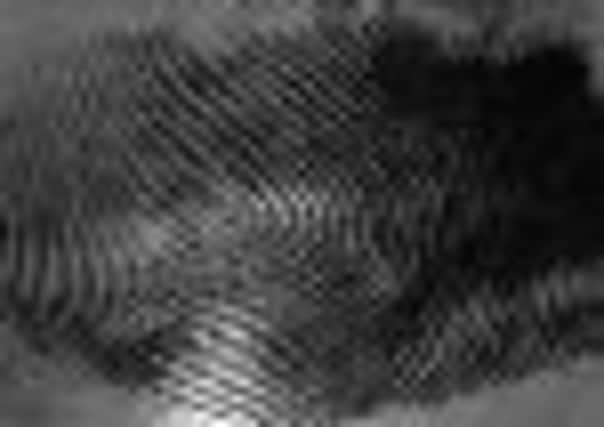Dundee forensic scientists in fingerprint first


Foods are notoriously difficult surfaces from which to recover prints and are often overlooked as potential sources of evidence.
But the team at Abertay have modified an existing technique, initially designed to recover fingerprints from the sticky side of adhesive tape, to lift prints from both fruit and vegetables.
Advertisement
Hide AdAdvertisement
Hide AdTheir findings have now been published in the forensic science journal “Science & Justice” to allow other forensic scientists to replicate their results.


Dennis Gentles, a former crime scene examiner who has worked at Abertay University for the past ten years, said the results of their research were “significant.”
He explained: “Although there are proven techniques to recover fingerprints from many different surfaces these days, there are some surfaces that remain elusive, such as feathers, human skin, and animal skin.
“Foods such as fruits and vegetables used to be in that category, because their surfaces vary so much – not just in their colour and texture, but in their porosity as well. These factors made recovering fingerprints problematic because some techniques, for example, work on porous surfaces while others only work on non-porous surfaces.”
He continued: “Using the right technique is of the utmost importance because if you use the wrong one, it can damage the print and destroy what could have been a vital piece of evidence.
“The fact that we’ve managed to successfully recover prints from such difficult surfaces as foods is another step forward in the fight against crime. It may not seem like much, but a piece of fruit might just be the only surface that has been handled in a crime scene so developing a trusted and tested technique to recover fingerprints from such surfaces is something to be valued by crime scene examiners.”
An Abertay University spokeswoman explained: “Because of the differences between the substances available in the UK and those used in the other studies, the team at Abertay began by testing a selection of the techniques currently recommended by the Home Office for recovering fingerprints.
“Disappointingly, their results showed that few of these techniques – when applied to foods including apples, tomatoes, onions and potatoes – produced a print of high enough quality for it to be presented as evidence in court.
Advertisement
Hide AdAdvertisement
Hide Ad“However, when they modified a substance known as Powder Suspension (PS) – a thick, tar-like substance – they found it produced a clear, high-quality mark on the smooth-surfaced food items such as the onions, apples and tomatoes.”
Mr Gentles said: “There are about 15 techniques that are currently recommended by the Home Office for recovering prints – from a variety of surfaces – and research teams are constantly refining them and developing new ones so that the police can get as much evidence of as high a quality as possible to help with an investigation.
“Although Powder Suspension was initially developed to recover prints from the sticky side of adhesive tape, it’s since been found to work on other surfaces, so we wondered whether it would work on foods, as this was something it hadn’t been tested on before.”
He continued: “The smooth surface of an apple is very different from that of sticky tape though, so such a thick substance wasn’t going to produce the same results on such a different surface. So we tried altering the formulation a bit, making it more dilute than that suggested by the Home Office, and found that it out-performed all the other methods we tested.”
Mr Gentles stressed: “Although there’s still a considerable amount of research to do before we can recommend techniques for all types of foods, we’ve shown for the first time that it really is possible to recover fingerprints from them – something that was previously thought to be unachievable.
“ This means the police will now be able to gather even more evidence to present in court, adding more weight to their investigations.”